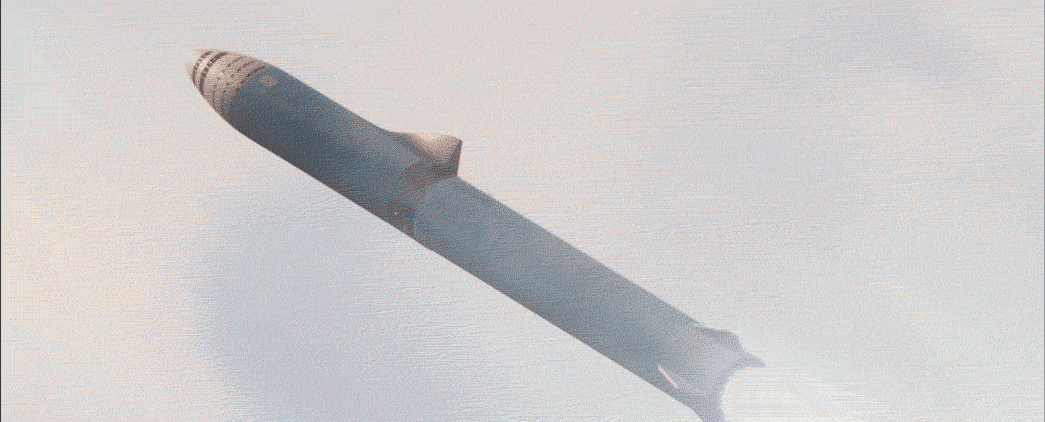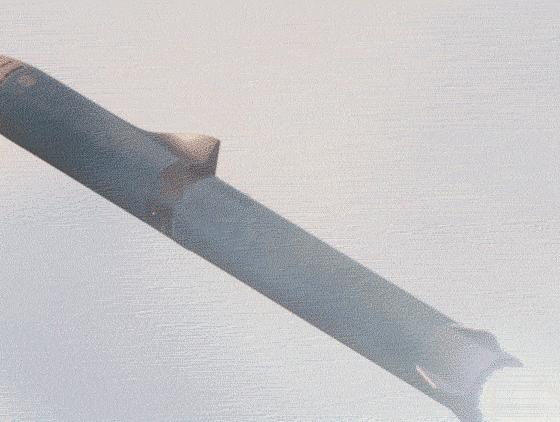

News
SpaceX Starship website spotted ahead of Elon Musk’s June rocket update
It appears that SpaceX is preparing a dedicated website for its proposed Starship point-to-point transport system, potentially capable of transporting dozens of passengers anywhere on Earth in just 30-60 minutes.
Assuming this website is actually a prelude to a SpaceX reveal (it could be completely unrelated), it seems likely that Starship.com will go live sometime around CEO Elon Musk’s planned June 20th update on Starship and Super Heavy. Much like Starlink.com went live on the day of SpaceX’s first dedicated launch, the company may be ready to tease more substantial details and fleshed-out plans for its aspirational Starship airline.

Big Falcon Challenge
Regardless of the theoretical viability of SpaceX’s Earth-to-Earth transport aspirations or the company’s readiness to kick off the publicity for the service, the fact remains that maturing Starship/Super Heavy (formerly BFR) into a system with reliability approaching that of airliners will take at least 5-10 years, if not decades. The idea itself – using reusable rockets to transport customers anywhere on Earth in 30-60 minutes at a cost comparable to business class tickets – is undeniably alluring and theoretically achievable. However, the list of “iff” statements that must first be satisfied for is immense and full of an array of technological firsts, any one of which could be a showstopper.
The greatest challenge of affordable, reliable point-to-point transport relates directly to the need for affordability and reliability. Put simply, rockets are in many ways far more complex than modern airliners, requiring margins of design and error and that would make commercial aircraft engineers blush. Modern FAA regulations currently expect manufacturers and operators to design, build, and fly passenger aircraft such that the chances of catastrophic failure (generally a fatal crash and total hull loss) average one in one billion flight hours. That may sound downright unachievable, but modern airliners routinely reach levels of reliability measured in hundreds of millions of flight hours between loss-of-life failures.
The best records of rocket reliability are currently held by Ariane 5 and Atlas V, reaching success streaks without catastrophic failure of 86 launches and 81 launches, respectively. It’s difficult to compare airliners and rockets, as rockets feature multiple stages and are typically only active for 30-90 minutes. Under the generous and inaccurate assumption that the average Ariane 5 mission accounts for 90 minutes of “flight time”, the most statistically reliable launch vehicle ever built is roughly 1,000,000 to 10,000,000 times less safe than the FAA’s present-day certification requirements. It would be more accurate to compare the distance traveled per catastrophic failure, but that would still indicate that the proven safety record of launch vehicles is perhaps 20,000 to 200,000 times worse than that of modern passenger aircraft.

Extreme reusability: extreme reliability?
Additionally, most modern rockets are expended, although SpaceX is doing everything it can to flip that equation. The only conceivable way to sustain a real commercial market for suborbital, hypersonic passenger transportation – aside from guaranteeing that passengers are unlikely to die – is to implement a level of rapid reusability that is entirely unprecedented in spaceflight. As it turns out, regardless of any Earthbound spaceliner ambitions the company may have, SpaceX’s ultimate mission is to accomplish precisely that goal, albeit in order to colonize Mars in a practical timeframe.
What has never explicitly been a part of SpaceX’s goal, however, is achieving that level of extreme reusability simultaneously alongside airliner-class reliability. Accepting high levels of risk has always been front and center to Elon Musk’s presentations on SpaceX’s BFR-powered Mars ambitions, with the CEO often indicating that chances of death would be quite high on early missions to the Red Planet. Of course, surviving and building a colony on Mars is a fair bit riskier than anything specifically centered around Earth and suborbital flight regimes.

All of this is to say that SpaceX may or may not succeed in its ambition of developing a spacecraft/booster that is as extraordinarily reliable as it is reusable, just as SpaceX may or may not publish a website dedicated to Earth-to-Earth Starship transport sometime next month. Stay tuned to find out on the next episode!
Check out Teslarati’s Marketplace! We offer Tesla accessories, including for the Tesla Cybertruck and Tesla Model 3.

News
Tesla starts showing how FSD will change lives in Europe
Local officials tested the system on narrow country roads and were impressed by FSD’s smooth, human-like driving, with some calling the service a game-changer for everyday life in areas that are far from urban centers.

Tesla has launched Europe’s first public shuttle service using Full Self-Driving (Supervised) in the rural Eifelkreis Bitburg-Prüm region of Germany, demonstrating how the technology can restore independence and mobility for people who struggle with limited transport options.
Local officials tested the system on narrow country roads and were impressed by FSD’s smooth, human-like driving, with some calling the service a game-changer for everyday life in areas that are far from urban centers.
Officials see real impact on rural residents
Arzfeld Mayor Johannes Kuhl and District Administrator Andreas Kruppert personally tested the Tesla shuttle service. This allowed them to see just how well FSD navigated winding lanes and rural roads confidently. Kruppert said, “Autonomous driving sounds like science fiction to many, but we simply see here that it works totally well in rural regions too.” Kuhl, for his part, also noted that FSD “feels like a very experienced driver.”
The pilot complements the area’s “Citizen Bus” program, which provides on-demand rides for elderly residents who can no longer drive themselves. Tesla Europe shared a video of a demonstration of the service, highlighting how FSD gives people their freedom back, even in places where public transport is not as prevalent.
What the Ministry for Economic Affairs and Transport says
Rhineland-Palatinate’s Minister Daniela Schmitt supported the project, praising the collaboration that made this “first of its kind in Europe” possible. As per the ministry, the rural rollout for the service shows FSD’s potential beyond major cities, and it delivers tangible benefits like grocery runs, doctor visits, and social connections for isolated residents.
“Reliable and flexible mobility is especially vital in rural areas. With the launch of a shuttle service using self-driving vehicles (FSD supervised) by Tesla in the Eifelkreis Bitburg-Prüm, an innovative pilot project is now getting underway that complements local community bus services. It is the first project of its kind in Europe.
“The result is a real gain for rural mobility: greater accessibility, more flexibility and tangible benefits for everyday life. A strong signal for innovation, cooperation and future-oriented mobility beyond urban centers,” the ministry wrote in a LinkedIn post.
News
Tesla China quietly posts Robotaxi-related job listing
Tesla China is currently seeking a Low Voltage Electrical Engineer to work on circuit board design for the company’s autonomous vehicles.

Tesla has posted a new job listing in Shanghai explicitly tied to its Robotaxi program, fueling speculation that the company is preparing to launch its dedicated autonomous ride-hailing service in China.
As noted in the listing, Tesla China is currently seeking a Low Voltage Electrical Engineer to work on circuit board design for the company’s autonomous vehicles.
Robotaxi-specific role
The listing, which was shared on social media platform X by industry watcher @tslaming, suggested that Tesla China is looking to fill the role urgently. The job listing itself specifically mentions that the person hired for the role will be working on the Low Voltage Hardware team, which would design the circuit boards that would serve as the nervous system of the Robotaxi.
Key tasks for the role, as indicated in the job listing, include collaboration with PCB layout, firmware, mechanical, program management, and validation teams, among other responsibilities. The role is based in Shanghai.
China Robotaxi launch
China represents a massive potential market for robotaxis, with its dense urban centers and supportive policies in select cities. Tesla has limited permission to roll out FSD in the country, though despite this, its vehicles have been hailed as among the best in the market when it comes to autonomous features. So far, at least, it appears that China supports Tesla’s FSD and Robotaxi rollout.
This was hinted at in November, when Tesla brought the Cybercab to the 8th China International Import Expo (CIIE) in Shanghai, marking the first time that the autonomous two-seater was brought to the Asia-Pacific region. The vehicle, despite not having a release date in China, received a significant amount of interest among the event’s attendees.
Elon Musk
Elon Musk and Tesla AI Director share insights after empty driver seat Robotaxi rides
The executives’ unoccupied tests hint at the rapid progress of Tesla’s unsupervised Robotaxi efforts.

Tesla CEO Elon Musk and AI Director Ashok Elluswamy celebrated Christmas Eve by sharing personal experiences with Robotaxi vehicles that had no safety monitor or occupant in the driver’s seat. Musk described the system’s “perfect driving” around Austin, while Elluswamy posted video from the back seat, calling it “an amazing experience.”
The executives’ unoccupied tests hint at the rapid progress of Tesla’s unsupervised Robotaxi efforts.
Elon and Ashok’s firsthand Robotaxi insights
Prior to Musk and the Tesla AI Director’s posts, sightings of unmanned Teslas navigating public roads were widely shared on social media. One such vehicle was spotted in Austin, Texas, which Elon Musk acknowleged by stating that “Testing is underway with no occupants in the car.”
Based on his Christmas Eve post, Musk seemed to have tested an unmanned Tesla himself. “A Tesla with no safety monitor in the car and me sitting in the passenger seat took me all around Austin on Sunday with perfect driving,” Musk wrote in his post.
Elluswamy responded with a 2-minute video showing himself in the rear of an unmanned Tesla. The video featured the vehicle’s empty front seats, as well as its smooth handling through real-world traffic. He captioned his video with the words, “It’s an amazing experience!”
Towards Unsupervised operations
During an xAI Hackathon earlier this month, Elon Musk mentioned that Tesla owed be removing Safety Monitors from its Robotaxis in Austin in just three weeks. “Unsupervised is pretty much solved at this point. So there will be Tesla Robotaxis operating in Austin with no one in them. Not even anyone in the passenger seat in about three weeks,” he said. Musk echoed similar estimates at the 2025 Annual Shareholder Meeting and the Q3 2025 earnings call.
Considering the insights that were posted Musk and Elluswamy, it does appear that Tesla is working hard towards operating its Robotaxis with no safety monitors. This is quite impressive considering that the service was launched just earlier this year.








